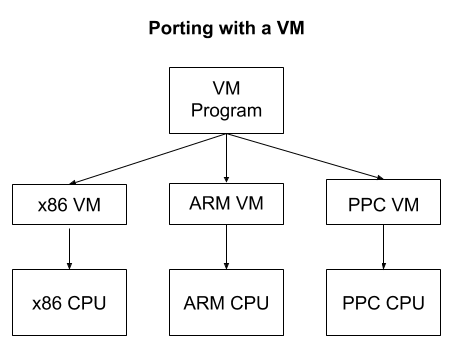

Write your Own Virtual Machine
source link: https://justinmeiners.github.io/lc3-vm/
Go to the source link to view the article. You can view the picture content, updated content and better typesetting reading experience. If the link is broken, please click the button below to view the snapshot at that time.
Write your Own Virtual Machine
2. Introduction
In this tutorial, I will teach you how to write your own virtual machine (VM) that can run assembly language programs, such as my friend's 2048 or my Roguelike. If you know how to program, but would like to gain a deeper understanding of what is going on inside a computer and better understand how programming languages work, then this project is for you. Writing your own VM may sound a little scary, but I promise that you will find it to be surprisingly simple and enlightening.
The final code is about 250 lines of C (unix, windows). All you need to know is how to read basic C or C++ and how to do binary arithmetic.
Note: This VM is a literate program. This means you are reading the source code right now! Each piece of code from the project will be shown and explained thoroughly, so you can be sure nothing is left out. The final code was created by "weaving" the blocks of code together.
What is a virtual machine?
A VM is a program that acts like a computer. It simulates a CPU along with a few other hardware components, allowing it to perform arithmetic, read and write to memory, and interact with I/O devices, just like a physical computer. Most importantly, it can understand a machine language which you can use to program it.
The amount of computer hardware the VM attempts to simulate depends on its purpose. Some VMs are designed to reproduce the behavior of some particular computer, such as video game emulators. Most people don't have an NES lying around anymore, but we can still play NES games by simulating the NES hardware in a program. These emulators must faithfully recreate every detail and major hardware component of the original device.
Other VMs don't act like any real computer and are entirely made up! This is primarily done to make software development easier. Imagine you wanted to create a program that ran on multiple computer architectures. A VM could offer a standard platform which provided portability for all of them. Instead of rewriting a program in different dialects of assembly for each CPU architecture, you would only need to write the small VM program in each assembly language. Each program would then be written only once in the VM's assembly language.


Note: A compiler solves a similar problem by compiling a standard high-level language to several CPU architectures. A VM creates one standard CPU architecture which is simulated on various hardware devices. One advantage of a compiler is that it has no runtime overhead while a VM does. Even though compilers do a pretty good job, writing a new one that targets multiple platforms is very difficult, so VMs are still helpful here. In practice, VMs and compilers are mixed at various levels.
The Java Virtual Machine (JVM) is a very successful example. The JVM itself is a moderately sized program that is small enough for one programmer to understand. This has made it possible to be written for thousands of devices including phones. Once the JVM is implemented on a new device, any Java, Kotlin, or Clojure program ever written can run on it without modification. The only cost is the overhead of the VM itself and the further abstraction from the machine. Most of the time, this is a pretty good tradeoff.
A VM doesn't have to be large or pervasive to provide a similar benefit. Old video games often used small VMs to provide simple scripting systems.
VMs are also useful for executing code in a secure or isolated way. One application of this is garbage collection. There is no trivial way to implement automatic garbage collection on top of C or C++ since a program cannot see its own stack or variables. However, a VM is “outside” the program it is running and can observe all of the memory references on the stack.
Another example of this behavior is demonstrated by Ethereum smart contracts. Smart contracts are small programs which are executed by each validating node in the blockchain network. This requires the node operators to run programs on their machines that have been written by complete strangers, without any opportunity to scrutinize them beforehand. To prevent a contract from doing malicious things, they are run inside a VM that has no access to the file system, network, disc, etc. Ethereum is also a good application of the portability features that result when using a VM. Since Ethereum nodes can be run on many kinds of computers and operating systems, the use of a VM allows smart contracts to be written without any consideration of the many platforms they run on.
Recommend
About Joyk
Aggregate valuable and interesting links.
Joyk means Joy of geeK